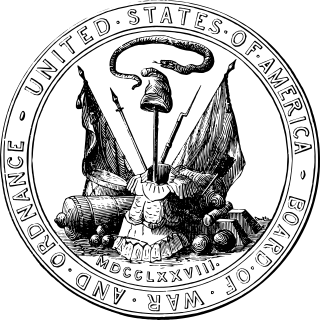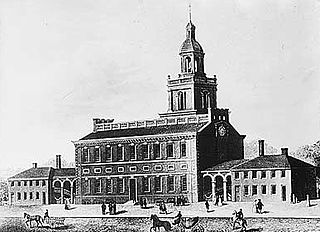 W
WThe Continental Army was formed by the Second Continental Congress after the outbreak of the American Revolutionary War by the former British colonies that later became the United States of America. Established by a resolution of the Congress on June 14, 1775, it was created to coordinate the military efforts of the Thirteen Colonies in their ultimately successful revolt against British rule. The Continental Army was supplemented by local militias and volunteer troops that remained under control of the individual states or were otherwise independent. General George Washington was the commander-in-chief of the army throughout the war.
 W
WThe Château Ramezay is a museum and historic building on Notre-Dame Street in Old Montreal, opposite Montreal City Hall in Montreal, Quebec, Canada.
 W
WThe Conway Cabal was a group of senior Continental Army officers in late 1777 and early 1778 who aimed to have George Washington replaced as commander-in-chief of the Army during the American Revolutionary War. It was named after Brigadier General Thomas Conway, whose letters criticizing Washington were forwarded to the Second Continental Congress. When these suggestions were made public, supporters of Washington mobilized to assist him politically. Conway ended up resigning from the army, and General Horatio Gates, a leading candidate to replace Washington, issued an apology for his role in events.
 W
WIn the American Revolutionary War units of the Continental Army were assigned to any one of seven regional or territorial departments to decentralize their command and administration. This was necessary because the regiment was the largest permanent unit in the Continental Army. A superior headquarters, above regiment, was needed if more than a few regiments were stationed in the same department. Although brigades, divisions, and field armies existed, they were temporary units which did not necessarily include all the units assigned to a department. Nor did field armies include establishments of the staff, such as magazines of the Quartermaster General's Department, or hospitals of the Hospital Department. The militia in a department was usually at the disposal of the department commander.
 W
WThe Newburgh Conspiracy was what appeared to be a planned military coup by the Continental Army in March 1783, when the American Revolutionary War was at its end. The conspiracy may have been instigated by members in the Congress of the Confederation, who circulated an anonymous letter in the army camp at Newburgh, New York, on March 10, 1783. Soldiers were unhappy that they had not been paid for some time and that pensions that had been promised remained unfunded. The letter suggested that they should take unspecified action against Congress to resolve the issue. The letter was said to have been written by Major John Armstrong, aide to General Horatio Gates, although the authorship of its text and underlying ideas is a subject of historical debate.
 W
WThe Pennsylvania Line Mutiny was a mutiny of Continental Army soldiers, who demanded higher pay and better housing conditions, and was the cause of the legend and stories surrounding the American heroine Tempe Wick. The mutiny began on January 1, 1781, and ended with a negotiated settlement on January 8, 1781. The negotiated terms were finally concluded by January 29, 1781. The mutiny was the most successful and important insurrection of Continental Army soldiers during the American Revolutionary War.
 W
WThe Pennsylvania Mutiny of 1783 was an anti-government protest by nearly 400 soldiers of the Continental Army in June 1783. The mutiny, and the refusal of the Executive Council of Pennsylvania to stop it, ultimately resulted in Congress of the Confederation vacating Philadelphia and the creation of a federal district to serve as the national capital.